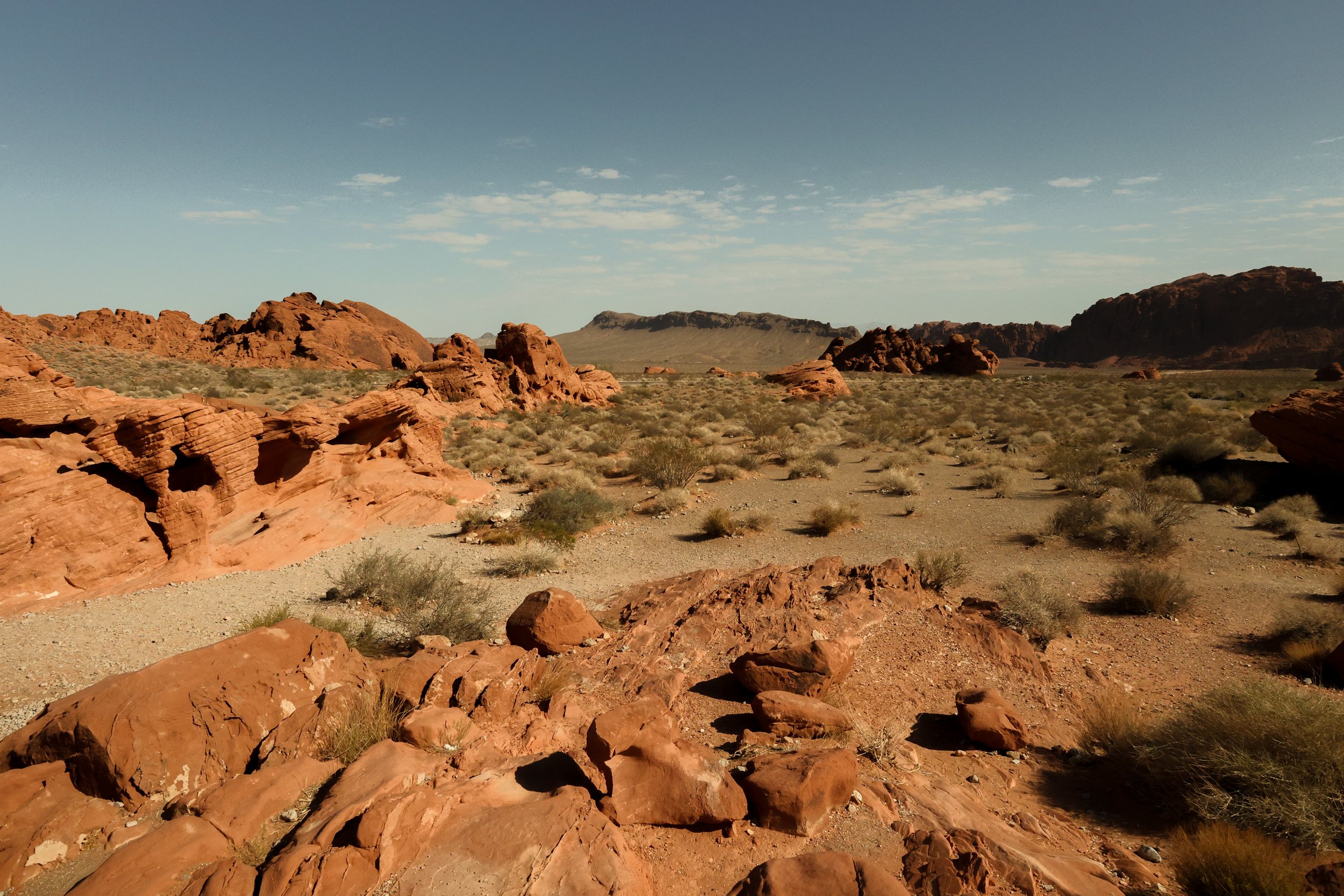The Las Vegas Issue
Arid Solace
Reflections in the Valley of Fire
With a crunch of my shoe into the gravelly floor below, out I step into the vast Mojave Desert. “Geology puts your life into context” — the words of a doctor who, unsolicited, shared his worldview before discharging me from the hospital — lingers in the still, hot air. He was an inspiring character who left a lasting impression on me despite our fleeting interactions. I felt empowered to take control of my mental health after our encounter, adopting breathing techniques and therapy as coping tools. I came to realize that, despite many stress-inducing unknowns in life, human existence is but a speck on the cosmic scale.
The Valley of Fire developed over hundreds of millions of years: a ceaseless reshaping by shifting winds. Before humans stepped on this terrain, dinosaurs roamed the Earth. Will Las Vegas survive hundreds of millions years into the future? To grapple with our own impermanence we seem to carve our names into boulders and leave our mark by creating art. I want to capture the moment with my photographs. I do not care for the ephemeral man-made landmarks one can find on the strip.
Pause.
Inhale three seconds…hold…wooooosh.
Pause
I am alone, alone with the steady rhythm of my footsteps and cyclical breathing. Towers of weathered sandstone span 360 degrees of panorama before transcending my field of vision. While shadowy darkness fills cavernous holes in rocky structures, taken as a whole, the canyon infused with iron minerals casts a perpetual red glow. It is as if I am suspended in time; motionless surroundings beckon a peaceful solitude for which I am grateful. Briefly interrupting, albeit warmly received, a blue-speckled lizard disappears and reappears like a magic trick from the rocks’ dark pockets.
I find myself subject to the gravitational pull of one particular formation isolated from the rest. It sucks me closer to its vertical surface in a trance. The variegated textures invoke an intrinsic fascination as I run my hand against its side. Smooth in some areas but jagged in others, protruding in some spots but sunken in others, its mesmerizing contradictions have inspired an entire sport. I understand why.
As a child, I found joy in collecting small things; I still do. My first love was rocks, tumbled and polished or washed ashore. I would grasp, squeeze, and turn them over in my hand, trying to imagine where they originated from. Out of place though resilient, these fragments of distant geographies take on new meaning. As our humble and wise guides, they connect us to faraway lands and transport us into the past. The expanse of the universe does not frighten me. I am comforted by the presence of these small yet significant rocks.
Words: Apollonia Cuneo
Photos: Apollonia Cuneo, Christina Kan




